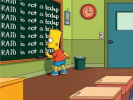Big Jim
Well-Known Member
- Reaction score
- 183
- Location
- Derbyshire, UK
Customer currently has a QNAP NAS in the office with 4 x 6TB drives in RAID10
then another one at home in the same configuration with a daily backup that runs after hours
they have filled them up in quite a short space of time (~2 years)
So I am now looking at the best options for them.
They essentially have 2 main folders, the main active one is currently 2TB and the archive "y" one is around 6TB.
I have given them the option of replacing all 4 drives in the "live" NAS or replacing 2 drives and switching to 2 x RAID 1 arrays.
with regards to the backup NAS, I was leaning towards just connecting a larger external drive for the live files, obviously this means the larger archive folder will only be backed up to a single drive, would this be unwise ?
then another one at home in the same configuration with a daily backup that runs after hours
they have filled them up in quite a short space of time (~2 years)
So I am now looking at the best options for them.
They essentially have 2 main folders, the main active one is currently 2TB and the archive "y" one is around 6TB.
I have given them the option of replacing all 4 drives in the "live" NAS or replacing 2 drives and switching to 2 x RAID 1 arrays.
with regards to the backup NAS, I was leaning towards just connecting a larger external drive for the live files, obviously this means the larger archive folder will only be backed up to a single drive, would this be unwise ?


